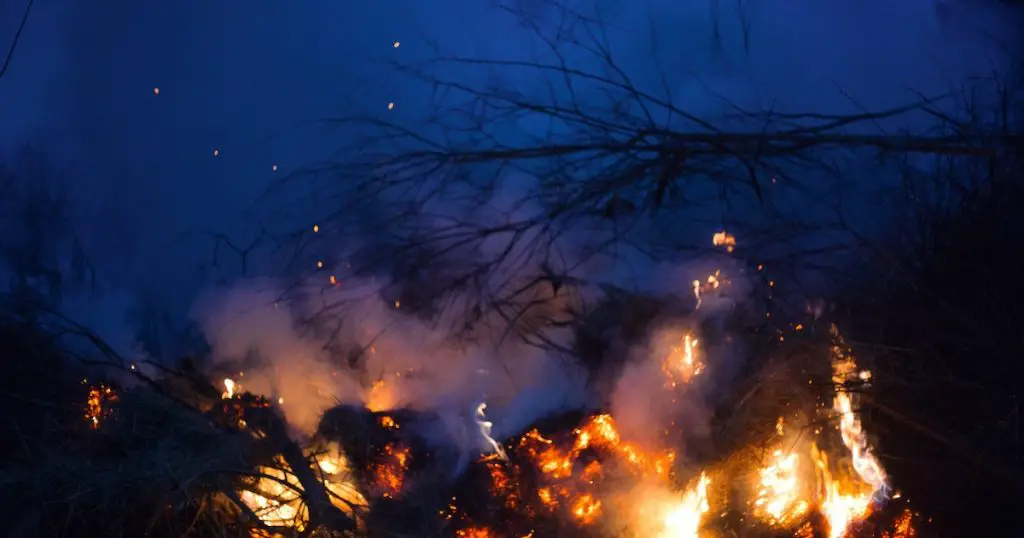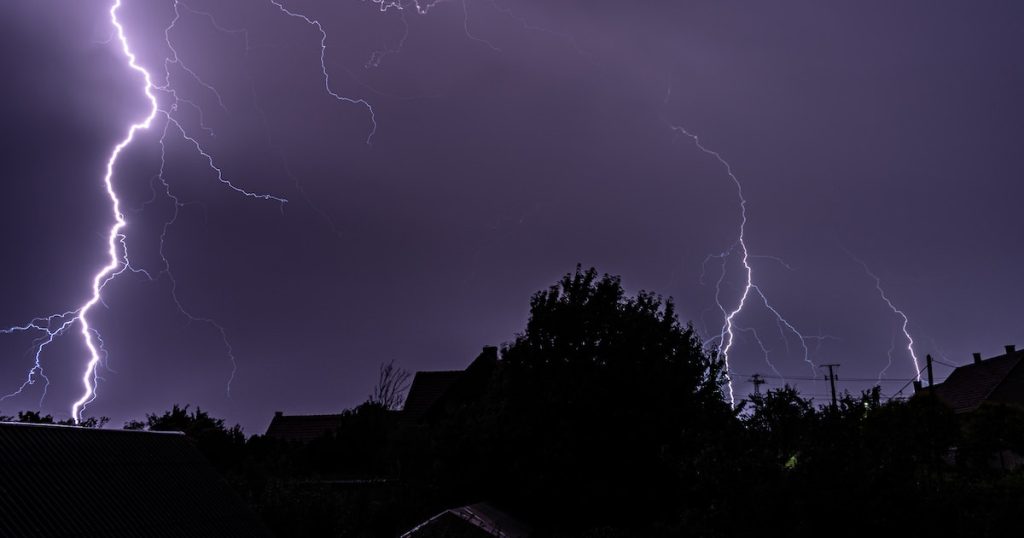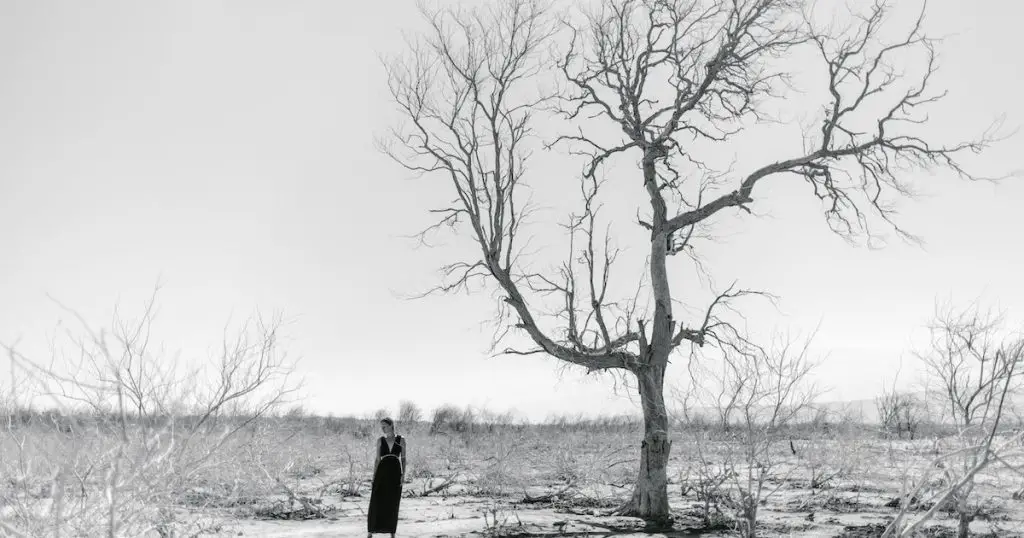Nestled in the heart of Arizona, Prescott is famed for its enchanting natural landmarks and rich history. Yet, as our planet grapples with the realities of climate change, even Prescott hasn’t remained untouched.

The impact of climate change on Prescott’s natural landmarks is becoming increasingly evident, raising concerns among environmentalists, locals, and tourists alike.
Climate Change: A Brief Overview
Climate change, often described as the defining issue of our time, refers to long-term shifts and alterations in temperature and weather patterns, primarily caused by human activities like deforestation and burning fossil fuels. This phenomenon leads to rising global temperatures, melting ice caps, and unpredictable weather events.
While it’s a global issue, its effects are felt locally, from intensified heat waves in some areas to increased flooding in others. The repercussions are vast and interconnected, affecting ecosystems, economies, and communities around the world, including places like Prescott with its cherished natural landmarks.
Understanding Climate Change: What It Means Globally
Climate change, at its core, refers to long-term shifts and alterations in temperature and weather patterns, primarily caused by human activities, such as deforestation and burning fossil fuels. The Earth’s average temperature has risen over the past century, and this trend is projected to continue, given the current pace of greenhouse gas emissions.
While many still debate its existence, the overwhelming consensus among scientists is that human-induced climate change is very real. The ramifications of these changes are vast, touching every corner of our planet – from melting Arctic ice caps to intensified and more frequent natural disasters.
The Greenhouse Effect and Its Role
The primary driver behind recent climate change is the greenhouse effect. Greenhouse gases, like carbon dioxide and methane, trap heat in the Earth’s atmosphere. While these gases are natural, human activities have exponentially increased their concentration. This “thickened” layer of gases traps more heat, leading to global warming.

This isn’t just a theoretical model. Studies have shown rising levels of these gases in our atmosphere, directly correlating with spikes in global temperatures.
Prescott’s Vital Natural Landmarks
Nestled amidst the vast landscapes of Arizona, Prescott is home to an array of awe-inspiring natural landmarks. The serene waters of Watson and Willow Lakes offer tranquil retreats, reflecting the beauty of the skies above.
Prescott National Forest, with its verdant stretches, is a testament to nature’s bounty, hosting a myriad of flora and fauna. And then there’s the iconic Granite Dells, ancient rock formations that have stood the test of time, evoking wonder and reverence.
These landmarks are more than just scenic spots; they are the heart and soul of Prescott, deeply interwoven with the region’s culture, history, and identity.
Granite Dells: Formation and Importance
Granite Dells, with its distinctive granite boulders, is more than just a picturesque spot. These formations are millions of years old and have provided habitats for countless species. Over time, erosion has sculpted these rocks into the unique shapes we see today.
However, as beautiful as they are, these formations are at risk. Changing weather patterns and increased rainfall have accelerated erosion rates, threatening their longevity.
The Lakes of Prescott: Watson, Willow, and Goldwater
The lakes of Prescott – Watson, Willow, and Goldwater – are vital to the region’s ecology. Apart from being recreational hotspots, they support various aquatic life and act as water sources for the surrounding areas.
Sadly, fluctuating water levels – a direct consequence of shifting weather patterns – are jeopardizing their stability. Unpredictable rainfalls and longer periods of drought are pushing these lakes to their limits.
Visible Changes: From Past to Present
Over the decades, Prescott’s cherished landscapes have borne witness to undeniable transformations. Once-steady water levels in the region’s lakes now ebb and flow with increasing unpredictability. The lush green expanses of Prescott National Forest show signs of strain, with patches of vegetation wilting under the intensifying heat.
Even the majestic Granite Dells show marks of accelerated erosion. These changes serve as tangible reminders of the pressing reality of climate change, highlighting the urgency to act and protect Prescott’s natural legacy for generations to come.
Fluctuations in Prescott’s Lakes: Drastic Changes in Water Levels
Recent years have seen concerning water level fluctuations in Prescott’s lakes. Extended dry spells, followed by intense rainfall, put immense strain on these ecosystems. Fish populations suffer, and the risk of wildfires around these dried-up areas increases.
Furthermore, reduced water levels in lakes like Goldwater can lead to increased concentrations of harmful chemicals, making them dangerous for both wildlife and human consumption.
Forest Transformations: Shifts in Vegetation and Tree Health
Prescott National Forest, an expansive stretch of green, is witnessing changes too. As temperatures rise, certain native species find it harder to thrive, making way for invasive species that can handle the hotter conditions.

This not only disrupts the balance of the ecosystem but poses threats like increased wildfires. In fact, studies suggest that forests worldwide are becoming more vulnerable due to climate change.
Underlying Causes: Linking Landmarks to Climate Change
The intricate dance between Prescott’s natural landmarks and the evolving climate reveals a story of cause and effect. The degradation and shifts in these landmarks aren’t isolated incidents; they are direct consequences of broader climate phenomena.
Increased temperatures result in faster evaporation from lakes, while unpredictable weather patterns accelerate erosion in areas like Granite Dells. Moreover, the introduction of non-native species due to these climatic changes challenges the balance of local ecosystems.
By understanding these intricate links, we gain clarity on the interconnectedness of our actions, the climate, and the cherished landscapes of Prescott.
Increased Temperatures: Effect on Water Sources
Higher temperatures lead to faster evaporation rates. This means that even if Prescott receives the same amount of rainfall, the increased heat can dry out lakes and rivers faster. For a region that relies heavily on its lakes, this spells potential disaster in the long run.
More than just heat, climate change brings about unpredictable weather patterns. According to the National Climate Assessment, regions like Prescott are seeing more frequent and intense storms, leading to increased erosion, especially in places like Granite Dells.
Local Initiatives: Battling Climate Change in Prescott
In response to the tangible threats of climate change, Prescott has taken commendable strides. Grounded in community spirit and foresight, local authorities and passionate residents have launched various conservation efforts, ranging from reforestation projects to sustainable water management practices.
These initiatives not only aim to protect Prescott’s treasured natural landmarks but also serve as a beacon of hope and a model for other communities. In the face of global challenges, Prescott’s proactive approach underscores the power of local action in fostering a sustainable future.
Conservation Efforts to Protect Prescott’s Landmarks
From initiating tree-planting drives to creating protected zones, conservation efforts are in full swing. By maintaining the natural balance, these efforts aim to ensure that landmarks like Granite Dells remain for future generations to appreciate.
Reforestation is a critical aspect of local efforts. Trees play an essential role in absorbing carbon dioxide, making them invaluable in the fight against climate change. Local communities are now rallying to plant more native species, ensuring the forest thrives for years to come.
Future Predictions: What Lies Ahead?
As we look to the future, the continued impact of climate change on Prescott’s natural landmarks looms large. With global temperatures set to rise further, we can anticipate more pronounced fluctuations in water levels, accelerated erosion rates, and heightened stresses on local ecosystems.
The resilience of Prescott’s environment will be tested, but with proactive measures and increased community awareness, there’s hope for preserving its rich natural heritage. Adapting to the changing climate while working towards sustainable solutions will be the linchpin for securing Prescott’s future.
Projected Changes for the Next 50 Years
The next few decades are crucial. If global emissions continue at the current rate, Prescott could see even more extreme temperature variations, affecting its natural landmarks even further. Water sources might become scarcer, and forest health could continue to decline.

As bleak as some predictions might be, they serve as a roadmap for preparation. By understanding potential future scenarios, local authorities can strategize better, focusing on adaptive and resilience measures that safeguard Prescott’s natural beauty.
Frequently Asked Questions: Impact of climate change on Prescott’s natural landmarks
How can locals and tourists help preserve Prescott’s landmarks?
Both groups can practice sustainable tourism, reduce waste, support local conservation efforts, and stay informed about environmental changes and their effects.
What are the primary indicators of climate change in Prescott?
Indicators include fluctuating water levels in lakes, changes in forest vegetation, increased temperatures, and more frequent extreme weather events.
How have wildlife populations in Prescott been impacted by climate changes?
Many species are finding it challenging to adapt to the rapid changes, leading to shifts in migration patterns and, in some cases, population declines.
Are there any collaborative initiatives between Prescott and other cities facing similar challenges?
Yes, Prescott often collaborates with neighboring cities and regions, sharing resources and knowledge to combat climate change effects.
How reliable are future projections about the impact of climate change on Prescott’s landmarks?
While no prediction is 100% accurate, most are based on extensive research and the latest scientific data, making them fairly reliable.
Conclusion
The impact of climate change on Prescott’s natural landmarks is undeniable. Yet, with informed strategies, collective effort, and a deep love for the environment, there’s hope that Prescott will retain its charm and beauty for future generations.
Our planet is undergoing significant transformations, and Prescott is no exception. The lakes, forests, and iconic rock formations that have drawn people to this region for centuries are changing right before our eyes. But in the face of these challenges, the community’s resilience and commitment to preserving its natural treasures are commendable.
By staying informed, supporting local initiatives, and doing our part as individuals, we can help mitigate the impact of climate change on these beloved landmarks. Climate change is not just a local issue; it’s a global one. While its effects on Prescott serve as a stark reminder of the reality we face, they also highlight the indomitable human spirit and our capacity to adapt, innovate, and protect our environment.
We may not be able to reverse all the changes that have taken place. But through collective action, awareness, and a commitment to sustainable living, we can ensure that Prescott’s natural landmarks continue to inspire awe and wonder for many more generations to come.
Each of us, whether a local resident or a visitor passing through, has a role to play. By respecting the land, supporting eco-friendly initiatives, and spreading awareness, we contribute to a brighter future for Prescott and the countless other regions across the globe facing the challenges of climate change.
It’s a journey of hope, perseverance, and love for the planet we call home. And as we stand at the crossroads, looking at the path that lies ahead, let’s choose the one that leads to a sustainable, harmonious coexistence with nature. After all, the story of Prescott and its natural landmarks is not just about the past or the present – it’s about the future we are shaping together.



Leave a Comment
You must be logged in to post a comment.